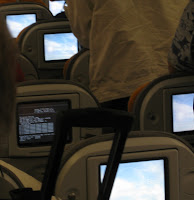 Arriving this morning in Brussels I was surprised by the length of the queue for taxis. Before seeing the number of people I considered taking a taxi to the meeting place as I had some luggage – but doing a quick count on the taxi frequency and the number of people in the line I decided to walk to make it in time. Then I remembered that some months ago I had a similar experience in Florence, when arriving at the airport for CHI. There I calculated the expected waiting time and choose the bus. Reflecting briefly on this it seems that this may be a new scheme to promote eco-friendly travel in cities… or why otherwise would there be not enough taxis in a free market?
Arriving this morning in Brussels I was surprised by the length of the queue for taxis. Before seeing the number of people I considered taking a taxi to the meeting place as I had some luggage – but doing a quick count on the taxi frequency and the number of people in the line I decided to walk to make it in time. Then I remembered that some months ago I had a similar experience in Florence, when arriving at the airport for CHI. There I calculated the expected waiting time and choose the bus. Reflecting briefly on this it seems that this may be a new scheme to promote eco-friendly travel in cities… or why otherwise would there be not enough taxis in a free market?
Reflecting a little longer I would expect that with upcoming pedestrian navigation systems we may see a switch to more people walking in the city. My hypothesis (based on minimal observation) is that people often take a taxi or public transport as they have no idea where to walk to and how long it would take when walking. If now a pedestrian navigation system can offer reliably a time of arrival estimation (which is probably more precise for walking than for driving as there is less traffic jam) and the direction the motivation to walk may be increased. We should probably put pedestrian navigation systems on our project topic list as there is still open research on this topic…





